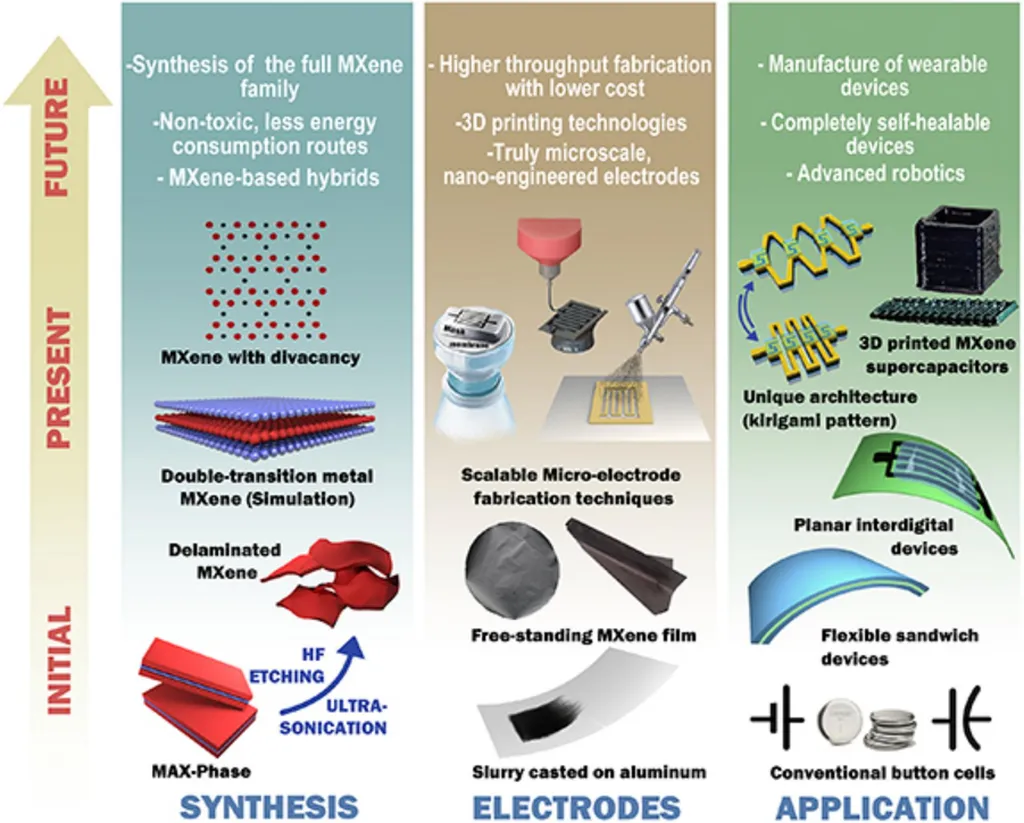In the heart of Brazil, researchers are making waves in the energy storage sector, and their work could soon ripple out to reshape the global landscape. Lucas de Sousa Silva, a physicist at the Federal University of Goiás in Goiânia, Brazil, has been delving into the world of MXene materials, a promising avenue for enhancing energy storage devices, particularly supercapacitors. His recent review, published in the journal *ACS Materials Au* (which translates to *ACS Materials Open Access*), offers a compelling look at how these materials could revolutionize energy storage.
MXenes, a family of two-dimensional materials known for their exceptional electrical conductivity and large surface area, have caught the attention of scientists worldwide. Silva’s review highlights their potential to significantly boost the performance of supercapacitors, devices that store and release energy quickly, making them ideal for applications like regenerative braking in electric vehicles and backup power supplies.
“The unique properties of MXenes make them highly suitable for energy storage applications,” Silva explains. “Their high conductivity and large surface area allow for fast charge-discharge cycles, which is crucial for supercapacitors.”
The implications for the energy sector are substantial. Supercapacitors equipped with MXene materials could offer faster charging times, longer lifespans, and greater energy density compared to traditional batteries. This could accelerate the adoption of electric vehicles, enhance the efficiency of renewable energy systems, and provide more reliable backup power solutions.
Silva’s review also underscores the need for further research to optimize the synthesis and integration of MXene materials into commercial products. “While the potential is immense, there are still challenges to overcome,” he notes. “We need to improve the scalability of MXene production and ensure their stability over long-term use.”
As the energy sector continues to evolve, the insights from Silva’s research could pave the way for more efficient and sustainable energy storage solutions. With ongoing advancements in materials science, the future of energy storage looks brighter than ever.

